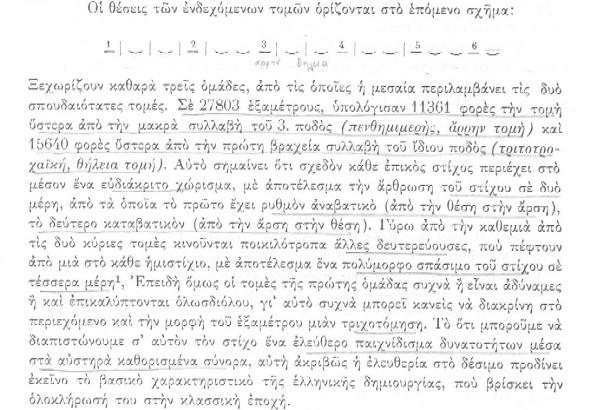TRANSLATION IN ENG:
The positions of the possible cuts are marked on the following sketch:

One can clearly set apart three groups, of which the middle one includes the two most important cuts. In 27803 hexametres it has been counted: 11361 times a cut after the long syllable of number 3 foot.
(πενθημιμερὴς, ἄρρην τoμὴ)(1) and 15640 times a cut after the first short syllable of the same foot
(τριτoτρoχαϊκή, θήλεια
τoμή).
(2) This means that almost every homeric verse has in its middle an easily detectable partition, and thus, the articulation of the verse is in two parts, of which the first is of an ascending rhythm (from downbeat to upbeat), and the second of a descending rhythm (from upbeat to downbeat). Around these two main cuts, there are secondary ones moving in various ways. Each one falls on every semi-verse resulting to a polymorphic breaking of the verse in four parts. But because the cuts of the first group are frequently either weak or entirely overlapped, we consequently detect quite often a three-breaking of both the content and form of the hexametre. The fact that we can confirm within this kind of verse a free play of potential within strictly set boundaries, this very freedom when binding, discloses that basic characteristic of greek creativity, which finds its completeness in the classical era.
